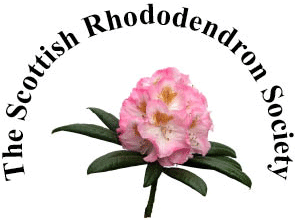An SRS Statement by John Hammond and Ian Douglas
Rhododendron ponticum is found chiefly in the wild in the Caucasus and N. Turkey, and in isolated pockets in Portugal and S. Spain. It was one of the first rhododendrons to be introduced into Britain, in the mid-18th century, with its ubiquitous purple to pink flower. Subsequently in the 19th century Rhododendron ponticum was planted not only for ornamental purposes but also to provide shelter, game cover and has been used as a hardy under-stock for grafting many hybrid rhododendrons.
Rhododendron ponticum’s capacity to naturalise itself has created much bad press and sometimes
uninformed publicity. It is an invasive plant, spreading relatively slowly by seed and by layering.
In favourable conditions it can over a significant number of years cover wide areas, seriously
disrupting the biodiversity of natural habitats and ecosystems. It is also one of a number of hosts to
Phytophthera ramorum and Phytophthera kernoviae, which are major threats to both the forestry
industry and to gardens. Its capacity to quickly put on fresh growth, having been cut back to the
ground, means it requires grubbing out or chemical treatment for effective eradication.
Legislation in Scotland classifies Rhododendron ponticum as an invasive species that cannot be
offered for sale commercially and which, if possible, should be eradicated. Forestry Commission
Scotland, for instance, in 2011 launched an action plan “to free the national forest estate of
rhododendron”. This is estimated to cost £15m and take to 15 years to achieve, with £1.6m being
allocated for the year 2011-12 (News Release No. 14783). Forestry Commission Scotland
acknowledges that this is an ambitious programme.
Research commissioned by Forestry Commission Scotland in 2008 estimated that in Argyll and
Bute Rhododendron ponticum covered 4,654 ha, of which 85% was in woodland. However, the
report (Edwards C. and Taylor S. “A survey and strategic appraisal of Rhododendron invasion and
control in woodland areas in Argyll and Bute” Roslin 2008) indicated that the area identified as
being covered by Rhododendron ponticum was significantly underestimated. To eradicate
Rhododendron ponticum from the identified areas only was estimated (2008 prices) to cost £9.3m.
The report also highlighted the problem of re-invasion and spread from untreated areas, so that
without comprehensive eradication the areas of Rhododendron ponticum could increase rather than
decline, with cost rising substantially for its eventual clearance, if achieved.
Given that there are substantial areas of Scotland, in addition to those in Argyll and Bute, which
are affected by Rhododendron ponticum it is clear that a high level of public investment will be
required to eradicate this invasive species. In addition, while the Forestry Commission Scotland
aims to free the national forest estate of Rhododendron ponticum this cannot be achieved without
measures being taken to also to eradicate Rhododendron ponticum in areas outwith the parts of the
country covered by its action plan. These other areas are owned by a multiplicity of interested
parties with varying commitment and financial ability to eradicate this invasive species. Kintyre
alone has vast areas covered by Rhododendron ponticum. Unless a comprehensive approach can
be adopted it is likely that the limited amount of funding earmarked for eradication in defined
areas will be wasted.
“Rhododendron ponticum is one species in a genus that contains over 1000 species of
rhododendrons and countless hybrids that have brought pleasure to professional and amateur
horticulturalists and garden lovers alike. None of the other species or hybrids have shown the
ability of Rhododendron ponticum to spread invasively. The rhetoric of press releases fails to
isolate Rhododendron ponticum as being the specific problem:”
“FCS aims to be rhododendron free (in 15 years)!”
“Everyone needs to do their bit and report any rhododendron that they see…”
This failure to identify in the public’s mind the specific cause of the problem, as well as the giving
of very optimistic forecasts for its eradication, will undermine the campaign to eradicate this
invasive species from the Scottish landscape. In addition, misleading information on costs and the
playing down of the risks of re-invasion will ultimately threaten future funding.
The problems of eradicating Rhododendron ponticum are enormous, as its capacity to survive
clearance, re-grow and generate new seed in a relatively short time cannot be under-estimated.
Ambitious targets and a lack of adequate funding will be counter-productive to achieving full
eradication. The Scottish Rhododendron Society has called on the Scottish Government for the
implementation of a national action plan for the permanent removal of the invasive species
Rhododendron ponticum from the whole country. The action plan should be based on a realistic
and open assessment of the scale and nature of the problems involved, engage the support of all
the interested parties and land owners, be properly funded, be effectively managed; and
implemented on the ground without eradicating or adversely affecting, all other Rhododendron
species and cultivars that are not invasive or a threat to natural habitats or ecosystems.
Prior to commencing work on any eradication exercise, it is vitally important to carefully consider
what use is to be made of the land being cleared of Rhododendron ponticum, as the ground will be
devoid of all the nutrients. Rhododendron ponticum is one of very few plants that is able to survive
on barren soil and, for this reason, it is likely that other invasive species will take over the area that
has been cleared unless there is a plan in-situ for rejuvenating the soil and replanting.
